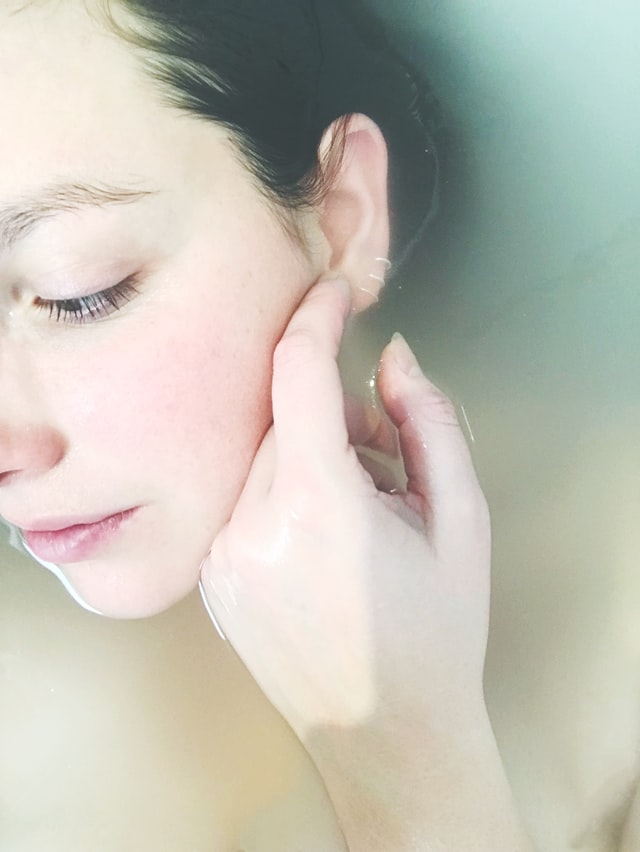You’re probably thinking that locking in moisture is the last thing you need to do with oily skin, but the truth is, it’s essential for a healthy and radiant complexion. To start, you’ll need to get rid of dead skin cells and debris by exfoliating one to three times a week, which allows for better moisture absorption. But that’s just the first step – you’ll also need to choose the right products and use them in a way that won’t clog your pores or throw off your skin’s natural balance. But where do you go from there? To achieve optimal hydration without compromising your skin, opt for lightweight, oil-free moisturizers that provide hydration without adding excess oil. Additionally, incorporating ingredients like hyaluronic acid and glycerin can help draw moisture into the skin while keeping it balanced. For those seeking further guidance, there are plenty of oily skin breakout prevention tips available that can help you maintain a clear and healthy complexion.
Exfoliate for Better Moisture Absorption
By exfoliating regularly, you'll remove dead skin cells and other debris that can clog pores and hinder moisture absorption, ultimately helping your oily skin look smoother and more balanced. When you don't exfoliate, dead skin cells and dirt can pile up, making it harder for your skin to absorb the moisture it needs. This can lead to dryness, irritation, and even more oil production – the opposite of what you want. Exfoliating helps clear the way for better moisture absorption, leaving your skin looking healthier and more radiant.
To make exfoliating a habit, try incorporating it into your skincare routine one to three times a week, depending on your skin's sensitivity. Use a gentle exfoliating scrub or a chemical exfoliant containing alpha-hydroxy acids (AHAs) or beta-hydroxy acids (BHAs), which will help break down dead skin cells without stripping your skin of its natural oils. Massage the exfoliant onto your skin for about 30 seconds, then rinse with lukewarm water. Your skin will thank you for the extra attention, and you'll start to notice an improvement in its texture and overall appearance. Regular exfoliation is a vital step in achieving balanced, healthy-looking skin.
Use the Right Moisturizer Product
Choosing the right moisturizer is crucial for oily skin, as it needs to strike a delicate balance between providing hydration and controlling shine. You want a product that will quench your skin's thirst without exacerbating its natural oiliness. Look for lightweight, oil-free, and non-comedogenic moisturizers that won't clog your pores. Water-based or gel moisturizers are great options, as they absorb quickly and won't leave a greasy residue.
When shopping for a moisturizer, read the label carefully. Avoid products containing petroleum-based ingredients, artificial fragrances, or dyes, which can irritate your skin and trigger more oil production. Instead, opt for products with natural ingredients like hyaluronic acid, green tea, or aloe vera, which can help soothe and calm your skin. Also, consider a moisturizer containing salicylic acid or glycolic acid, which can help exfoliate your skin and unclog pores. By choosing the right moisturizer, you'll be able to lock in moisture without exacerbating your skin's oiliness.
Balance Skin Ph Levels Naturally
Maintaining your skin's natural pH balance is crucial for oily skin, as an imbalance can trigger increased sebum production and clogged pores. You see, your skin's pH level affects its barrier function, which regulates the amount of moisture that enters and exits. When your skin's pH is off, it can't lock in moisture effectively, leading to oiliness and other issues. So, how can you balance your skin's pH levels naturally?
First, be gentle with your skin by using cleansers that are formulated for your skin type. Avoid harsh products that can strip your skin of its natural oils and disrupt its pH balance. Instead, opt for mild cleansers that are fragrance-free and hypoallergenic. You can also try using natural ingredients like aloe vera, which has anti-inflammatory properties and can help soothe irritated skin. Additionally, make sure to rinse your face thoroughly with lukewarm water, as hot water can also disrupt your skin's pH balance. By being mindful of your skin's pH levels, you can reduce oiliness and promote a healthier, more balanced complexion.
Layer Products for Maximum Hydration
To combat oiliness, layering the right products in the right order can help you achieve maximum hydration without clogging your pores. You want to start with a lightweight, oil-free serum that won't weigh your skin down. Look for a serum rich in humectants like hyaluronic acid or glycerin, which will help lock in moisture. Apply a few drops all over your face, gently massaging it into your skin until fully absorbed.
Next, apply a water-based moisturizer that's specifically designed for oily skin. This will help replenish your skin's water levels without adding extra oil. Choose a moisturizer that's labeled 'non-comedogenic' or 'oil-free' to guarantee it won't clog your pores. Apply a small amount, just enough to cover your face, and gently pat it in. Don't overdo it – remember, the goal is to hydrate, not suffocate your skin. By layering these products, you'll be able to achieve maximum hydration without exacerbating oiliness. Remember to choose products that are suitable for your skin type, and always read the labels carefully to avoid any adverse reactions.
Seal Moisture With Facial Oil
By adding a few drops of facial oil to your routine, you can effectively seal in the moisture you've worked so hard to achieve. You might be thinking, 'But won't facial oil clog my pores and make my oily skin even oilier?' Not if you choose the right one. Look for lightweight, non-greasy oils that are specifically formulated for oily skin, such as jojoba or grapeseed oil. These oils will help lock in moisture without overwhelming your skin.
When applying facial oil, a little goes a long way. Start with a few drops and gently massage it into your skin, making sure to cover all areas evenly. This will help prevent any dry spots and guarantee that your skin stays hydrated and balanced. By sealing in moisture with facial oil, you'll be able to maintain a healthy, radiant complexion all day long. Just remember to use it sparingly and choose a oil that's right for your skin type. With the right facial oil, you can say goodbye to dry, flaky skin and hello to a smooth, supple complexion.
At a Glance
You've got the inside scoop on how to lock in moisture for oily skin. By following these five essential steps, you'll be on your way to a radiant complexion. Exfoliate regularly, choose the right moisturizer, balance your skin's pH, layer products for max hydration, and seal it all in with a lightweight facial oil. Now, go ahead and give your skin the TLC it deserves – you'll be glowing in no time!






